Embark on a journey into the expressive realm of the Aromantic Flag, a vibrant emblem that extends beyond its colorful composition to symbolize the diverse experiences within the Aromantic community. In this exploration, we’ll unravel the meanings behind each distinctive shade, appreciate the thoughtful design, and delve into the profound symbolism encapsulated in this flag. Join us in honoring the uniqueness of Aromantic identities and celebrating the inclusive spirit that defines the rich tapestry of non-romantic love within this community.

Download the Aromantic Flag as a HR PNG or SVG.
Meaning and Symbolism
The Aromantic flag, with its distinct set of colors and design, serves as a powerful symbol for the Aromantic community, contributing to the visibility and recognition of Aromanticism. Comprised of four horizontal stripes – dark green at the top, light green, white, and gray at the bottom – the Aro flag encapsulates the essence of the Aromantic identity.
The flag is more than a mere visual representation; it embodies the diversity within the Aromantic spectrum. Aromanticism, falling under the LGBTQ+ umbrella, refers to a non-romantic orientation, where individuals may experience limited or no romantic attraction. The Aro flag becomes a beacon of identity, fostering a sense of belonging and pride within the Aro community.
In a world where romantic relationships often take center stage, the Aro flag stands as a symbol of resistance, challenging the societal norm that places romantic love on a pedestal. It’s a celebration of non-romantic orientations and a testament to the validity of diverse identities within the queer community.
Aro symbols and flags play a crucial role in Aromantic awareness and activism. They provide a visual language for expressing Aro identity, enabling individuals to communicate their orientation with simplicity and clarity. Aromantic Pride, celebrated with the Aro flag proudly displayed, contributes to a broader conversation about acceptance, equality, and inclusion.
Beyond its symbolism, the Aro flag also represents a history of struggle and resilience. Aromantic individuals have fought for recognition, understanding, and the right to exist without conforming to societal expectations. The flag becomes a tangible expression of this ongoing journey and a source of empowerment for Aromantic individuals.
As Aromantic awareness grows, so does the importance of the Aro flag as a tool for education and representation. Its presence in various forms, from online spaces to physical events, contributes to the visibility of Aromantic perspectives and experiences. The Aro flag serves as a reminder that diversity extends beyond romantic orientations, fostering a more inclusive and understanding society.

History of the Aromantic Flag
The Aromantic flag, a vibrant emblem of the Aromantic community, traces its origins to the need for representation within the broader spectrum of sexual orientations. Designed by Tumblr user Cameron McCulloch in 2014, the flag aimed to create a visual identity for individuals identifying as Aromantic. This marked a significant milestone in Aromantic history, as it provided a symbol to rally around and a means to express a unique identity.
The choice of colors in the Aro flag design holds intentional significance. The dark green stripe at the top represents the spectrum of romantic orientations, highlighting the diverse ways people experience romantic attraction. The light green stripe symbolizes the spectrum of romantic orientations that exist outside the traditional norms. The white stripe in the middle signifies platonic and aesthetic attractions, emphasizing the importance of non-romantic relationships. Finally, the gray stripe at the bottom represents the spectrum of individuals who identify as demiromantic, experiencing romantic attraction only in specific circumstances.
The history of the Aromantic flag is closely tied to the Aro community’s quest for recognition and visibility. As Aromantic individuals sought spaces to share their experiences and find support, the Aro flag emerged as a unifying symbol. It became a visual representation of Aromanticism, fostering a sense of pride and solidarity among those who identified as Aromantic.
Over the years, the Aro flag has become a widely recognized symbol within LGBTQ+ circles, marking Aromantic Pride Month celebrations and other events dedicated to Aromantic awareness. Its presence in online spaces, social media, and physical gatherings has played a crucial role in fostering a sense of community and dispelling misconceptions about Aromantic identities.
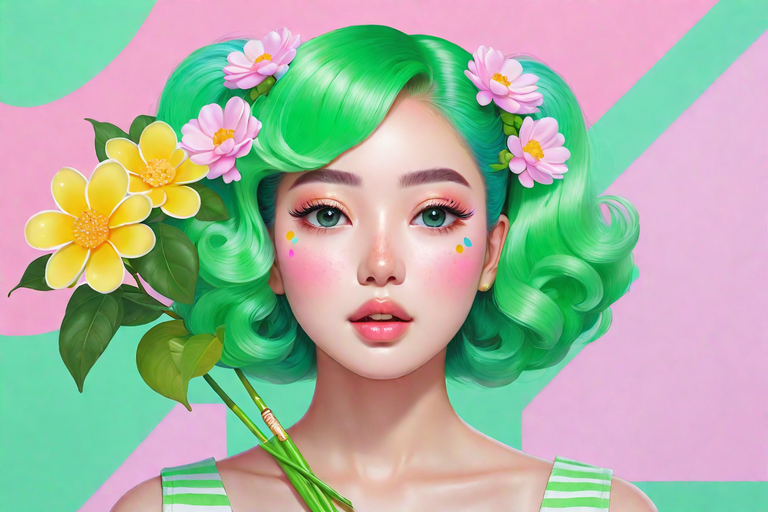
Colors and Their Representation
The Aromantic flag, adorned with carefully chosen colors, serves as a powerful symbol for the Aromantic community, each hue representing different facets within the Aromantic spectrum. Delving into the symbolism behind these colors enhances our understanding of Aromantic identities.
Green and Light Green (Aro Spectrum): The top two colors, green and light green, symbolize the Aro spectrum. Green represents the diverse experiences within aromanticism, boldly claiming a space for the Aromantic community. Light green complements this, emphasizing variations in romantic feelings that may differ from societal expectations.
White (Platonic and Aesthetic Connections): The white stripe symbolizes non-romantic relationships, including platonic connections, friendships, family bonds, and queerplatonic relationships. It celebrates the validity and importance of all forms of non-romantic relationships, highlighting the richness found in connections beyond romantic love.
Black and Grey (Sexuality Spectrum): The black and grey stripes continue to acknowledge the spectrum of sexuality within the aromantic community. This includes aro-aces (aromantic asexual individuals), aromantic allosexuals, and everything in between. These colors represent and embrace the diversity of romantic and sexual orientations within the aromantic community, promoting inclusivity and representation.
Each color on the Aromantic flag contributes to a vibrant representation of Aromantic identity, capturing the nuances of aromantic experiences, the significance of non-romantic connections, and the diversity within the community’s spectrum of sexuality.

What are the RAL or Pantone colors of the Aromantic Flag?
The Aromantic Flag doesn’t have official Pantone or RAL specifications, the following approximations can be used:

GREEN
Pantone: 7739 C
RAL: 6037
HEX: #3da542

LIGHT GREEN
Pantone: 358 C
RAL: 6018
HEX: #a7d379

WHITE
Pantone: White
RAL: 9010
HEX: #FFFFFF

GRAY
Pantone: Black 0961 C
RAL: 7030
HEX: #a9a9a9

BLACK
Pantone: Black C
RAL: 9005
HEX: #000000
Kindly be aware that the colors mentioned here are approximations, and the exact shades may vary based on factors such as the production method, material, and lighting conditions. For accurate color representation, it is advisable to utilize physical color samples or seek guidance from a professional color-matching service.

Usage and Recognition
The Aromantic flag has become a powerful symbol of visibility and recognition within the Aromantic community, gaining widespread usage and acceptance in various LGBTQ+ spaces. Its presence is not merely aesthetic; it serves as a tool for communication, education, and fostering a sense of belonging.
Online platforms play a crucial role in the widespread usage of the Aromantic flag. Social media, forums, and websites dedicated to LGBTQ+ discussions prominently feature the Aro flag in user profiles, posts, and banners. This digital visibility contributes to a sense of community among Aromantic individuals, allowing them to connect with others who share similar experiences and identities.
Aromantic Pride Month, observed in February, sees a surge in the usage of the Aro flag across different platforms. During this month, Aromantic individuals and allies proudly display the flag as a celebration of Aromanticism, promoting awareness and understanding. The flag becomes a focal point for events, discussions, and activities that aim to amplify Aromantic voices.
The recognition of the Aromantic flag extends beyond virtual spaces. Physical manifestations of the flag, such as banners, pins, and clothing, have become common sights at LGBTQ+ events, parades, and gatherings. Its presence serves as a tangible representation of Aromantic visibility, signaling the inclusivity of the broader queer community.
The Aro flag’s usage is not limited to Aromantic individuals alone; allies within and outside the LGBTQ+ community also embrace it. The flag becomes a symbol of solidarity, indicating support for Aromantic rights, acceptance, and understanding. Its recognition among allies contributes to a more inclusive and empathetic environment for Aromantic individuals.
In educational settings, the Aromantic flag plays a vital role in raising awareness about Aromanticism. It provides a visual reference for discussions on diverse romantic orientations, challenging preconceived notions and fostering a more informed and accepting society.
Overall, the Aromantic flag’s widespread usage and recognition underscore its importance as a symbol of Aromantic visibility, pride, and community. As its presence continues to grow, so does the understanding and acceptance of Aromantic identities within the broader LGBTQ+ spectrum.
Related Flags and Symbols:

Rainbow Flag: The universally recognized LGBTQ+ Pride flag, featuring a spectrum of colors, designed by Gilbert Baker.

Transgender Pride Flag: Designed by transgender activist and Navy veteran Monica Helms, it consists of light blue, pink, and white stripes, representing the transgender community.
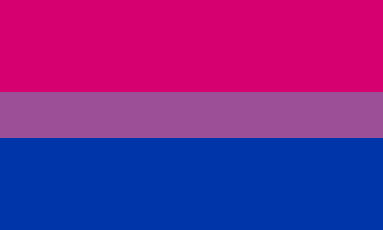
Bisexual Pride Flag: Created by Michael Page, it features three horizontal stripes—pink, purple, and blue—symbolizing attraction to more than one gender.

Non-Binary Pride Flag: Created by Kye Rowan, it features yellow, white, purple, and black stripes, symbolizing genders outside the traditional binary.

Genderqueer Pride Flag: Designed by Marilyn Roxie, it features lavender, white, and dark green stripes, representing genderqueer, non-binary, and genderfluid identities.
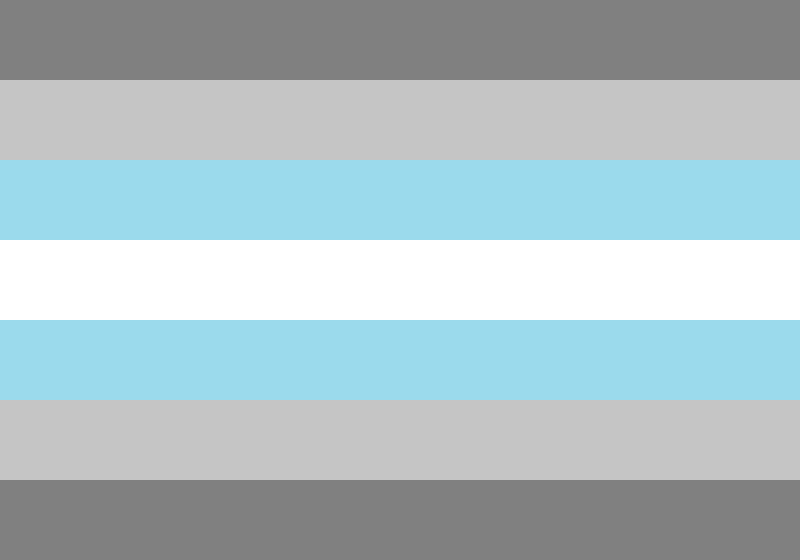
Demiboy Pride Flag: Designed by an anonymous Tumblr user, it consists of light blue, white, and black stripes, representing a partial connection to being male.

Demigirl Pride Flag: Also designed by an anonymous Tumblr user, it features light pink, white, and black stripes, representing a partial connection to being female.

The Genderfluid Flag: designed in 2012 by activist JJ Poole, is a vibrant emblem symbolizing the diverse spectrum of gender identities, with each carefully chosen color representing different facets of the genderfluid experience.

The Omnisexual Flag: Omnisexuality involves attraction to all genders, with preferences varying. Created in 2015, the Omnisexual Pride Flag represents the gender spectrum with light pink and blue for femininity and masculinity, and dark purple for those outside traditional categories..
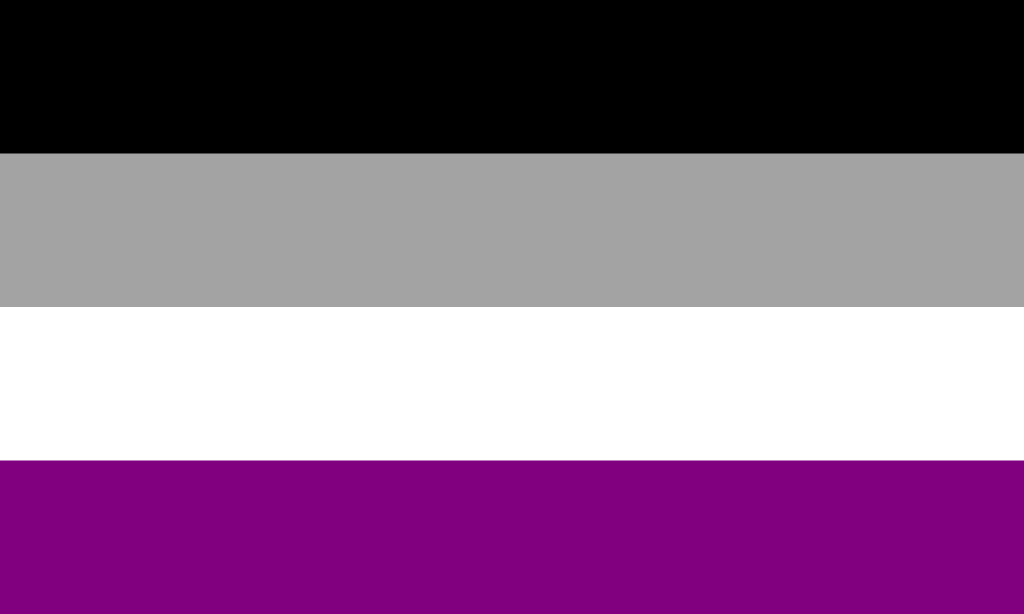
The Asexual Pride Flag:
Crafted in 2010 by StandUp of AVEN, the Asexual Pride Flag symbolizes the asexual community with its four horizontal stripes: black for asexuality, gray for the spectrum, white for sexuality, and purple for diversity. Read more.

The Pansexual Pride Flag:
The 2010 Pansexual Pride Flag, featuring three horizontal stripes representing attraction to females, males, and all genders (pink, blue, and yellow, respectively), stands as a vibrant symbol of the inclusive nature of pansexuality at LGBTQ+ events and online platforms. Read more.

Aromantic Community Acceptance and Adoption
The Aromantic community’s path to acceptance and adoption revolves around building understanding and visibility. Online platforms and community forums provide spaces where Aromantic individuals connect and share experiences, fostering a sense of belonging. The Aro flag, a unifying symbol, is proudly displayed during Aromantic Pride Month, signaling a commitment to celebration and awareness.
In this journey, allies play a crucial role in breaking down misconceptions and advocating for Aromantic rights. Educational initiatives contribute to a more informed and empathetic society, while accurate media representation helps challenge stereotypes.
As Aromantic perspectives gain visibility, the community experiences a meaningful shift toward broader acceptance within the LGBTQ+ spectrum. The adoption of Aromantic language, symbols, and narratives reflects a commitment to recognizing and respecting diverse romantic orientations.
What does it mean to be Aromantic?
Being aromantic means experiencing little to no romantic attraction. Aromantic individuals, often referred to as “aros,” do not feel the same pull toward romantic relationships as many others do. This doesn’t mean they lack meaningful connections or emotions; rather, they may prioritize platonic, familial, or other forms of non-romantic relationships.
Aromanticism exists on a spectrum, acknowledging that individuals may have varied experiences with romantic attraction. Some aromantic individuals may never experience romantic feelings, while others may experience them under specific circumstances, known as demiromantic.
Importantly, being aromantic is a valid and authentic part of the diverse spectrum of human identities. Aromantic individuals contribute to the rich tapestry of relationships and experiences, challenging societal norms that often prioritize romantic love. Acceptance and understanding of aromanticism contribute to creating a more inclusive and supportive environment for individuals with different romantic orientations within the broader LGBTQ+ community.

What are the different types of Aromantic people?
The Aromantic spectrum unfolds like a tapestry, weaving together diverse experiences and identities within Aromanticism. Let’s delve deeper into the kaleidoscope of Aromantic people, each contributing a unique hue to the vibrant canvas of non-romantic relationships:
- Aromantic (Aro): At the core of the spectrum are Aromantic individuals, embracing a lack of romantic attraction or feeling it to a minimal extent.
- Demiromantic: Painting a nuanced stroke, Demiromantics form deep emotional connections before experiencing romantic attraction, adding a layer of complexity to the spectrum.
- Gray-romantic: Shaded in ambiguity, Gray-romantics find their place, identifying with the Aromantic spectrum while navigating occasional or unclear romantic feelings.
- Aro-Ace (Aromantic Asexual): A distinctive shade, Aro-Aces embody those who do not feel romantic or sexual attraction, creating a canvas that blends both colors seamlessly.
- Aromantic Allosexual: Adding another brushstroke, Aromantic Allosexuals don’t experience romantic attraction but may still engage in fulfilling sexual relationships.
- Quoiromantic: A whimsical touch, Quoiromantics grapple with defining or understanding their romantic feelings, contributing an element of mystery to the spectrum.
- WTFromantic: Splashed with uncertainty, WTFromantics express confusion or ambiguity about their romantic feelings, embracing the ongoing journey of self-discovery.
- Cupioromantic: Infusing desire into the mix, Cupioromantics seek romantic connections even if they don’t experience the typical feelings associated with romance.
- Akoiromantic: A bold stroke, Akoiromantics can experience romantic attraction but consciously choose not to pursue romantic relationships, illustrating the agency within the spectrum.
- Lithromantic: Adding a delicate touch, Lithromantics experience romantic attraction without necessarily desiring reciprocation, creating a nuanced exploration of romantic feelings.
In celebrating this diversity within the Aromantic spectrum, we recognize that each term represents a unique brushstroke on the canvas of identity, fostering a richer understanding of the intricate ways individuals relate to and navigate the realm of romantic attraction.

Inclusivity and Representation
Inclusivity and representation play pivotal roles in fostering a supportive environment for the aromantic community within the LGBTQ+ spectrum. Acknowledging the diverse range of romantic orientations, including aromanticism, is essential for creating understanding and respect. Representation in media, literature, and cultural narratives is crucial, as it validates aromantic experiences and dispels stereotypes, contributing to increased awareness.
Accurate language and terminology are fundamental in promoting inclusivity. Recognizing the spectrum of aromantic experiences, such as being aromantic, demiromantic, or other nuanced identities within the aromantic spectrum, helps establish a language that is both accurate and respectful.
Education is a powerful tool for inclusivity. Workshops, discussions, and resources that provide accurate information about aromantic experiences contribute to a more informed society. Incorporating aromantic perspectives into educational curricula builds a foundation of understanding and acceptance from an early age.
Allyship is another key component. Allies within the LGBTQ+ community and beyond can actively support aromantic individuals by listening, learning, and advocating for inclusivity. Amplifying aromantic voices and respecting their unique experiences contribute to creating a more supportive and affirming environment.
Support and Resources
Navigating the Aromantic spectrum comes with its own set of joys and challenges, and finding support and resources is crucial for fostering a sense of community and understanding. Whether you’re exploring your Aromantic identity or seeking to support someone you care about, there are various avenues to tap into for assistance and connection.
Aro Communities and Online Spaces: Connecting with Aromantic communities online can provide a wealth of support. Platforms such as forums, social media groups, and dedicated websites offer spaces where individuals can share their experiences, ask questions, and engage in discussions about Aromanticism. These communities contribute to a sense of belonging and can be valuable resources for navigating the Aro spectrum.
Educational Resources: Understanding Aromanticism is a crucial step in fostering acceptance and awareness. Educational resources, ranging from articles and blogs to videos and podcasts, offer insights into the Aromantic experience. These materials help debunk myths, provide terminology for expressing Aromantic identities, and contribute to a broader understanding of diverse romantic orientations.
Aro Visibility and Representation: Visibility matters, and seeing Aromantic representation in various forms of media can be affirming. Aromantic characters in literature, movies, and TV shows, as well as Aromantic artists and their work, contribute to the normalization of Aromantic identities. This representation is an essential aspect of fostering acceptance and breaking down societal misconceptions.
Aro Support Organizations: Numerous organizations are dedicated to supporting Aromantic individuals and promoting awareness. These organizations often offer resources, helplines, and events that focus on Aromanticism. Engaging with such organizations can provide both practical support and opportunities for advocacy within the wider LGBTQ+ community.
Aro Pride Events: Participating in Aromantic Pride events, especially during Aro Pride Month, can be a joyful and empowering experience. These events celebrate Aromantic identities, promote visibility, and create spaces for individuals to express their non-romantic orientations proudly. Attending Aro Pride events can foster a sense of community and empowerment.
Remember, everyone’s journey is unique, and finding the right support and resources is a personal process. Whether you’re exploring your Aromantic identity or supporting someone on their journey, these avenues can be valuable tools for connection and understanding in the vibrant tapestry of the Aromantic community.
Where to buy a Aromantic Flag?

Buy pride flags on eBay
eBay has a large collection of HQ and affordable Aromantic Flags!

Buy products on Redbubble
Redbubble has a large collection of products with the Aromantic Flag, such as pillows, phone cases, T-shirts, mugs, hats, and much more!

Buy on Grpride
Grpride offers a HQ Armomatic flag!

Download the Aromantic Flag.
Download as (10000×6000 px) PNG or SVG.
Can I use the downloaded flag for my personal projects? Yes you can, this flag is in the public domain and you can use it in whatever way you like.
How about commercial useage? The same, you can use it commercially and personally!
How do I know I am Aromantic?
Discovering and understanding your romantic identity, including whether you might be aromantic, is a personal journey that unfolds at its own pace. Here are some reflections and considerations that might help you explore the possibility of being aromantic:
- Lack of Romantic Attraction: One key aspect is a consistent lack of romantic attraction or feeling it to a minimal extent. Reflect on your experiences and notice if traditional romantic feelings haven’t been a prominent part of your emotional landscape.
- Non-Interest in Romantic Relationships: Consider your feelings toward romantic relationships. If you find yourself not actively seeking or desiring romantic connections, and the idea of romance doesn’t resonate with you, this could be an indication.
- Differentiating Between Types of Attraction: Reflect on the distinctions between romantic attraction, platonic attraction, and aesthetic attraction. Aromantic individuals often experience strong platonic and aesthetic connections without the romantic component.
- Observing Personal Patterns: Notice any patterns in your past relationships or attractions. If you consistently find that romantic feelings haven’t played a significant role, it might be worth exploring your placement within the aromantic spectrum.
- Exploring Labels: Familiarize yourself with terms related to aromanticism, such as aromantic, demiromantic, gray-romantic, and others. Reading about these identities might resonate with your experiences and help you better articulate your feelings.
- Embracing Personal Agency: Embrace the idea that your feelings and experiences are valid, regardless of societal expectations. If the traditional narrative of romantic relationships doesn’t align with your own, that’s perfectly okay.
- Connecting with Aromantic Communities: Engaging with Aromantic communities online or in-person can provide valuable insights. Hearing others’ experiences and sharing your own can foster a sense of belonging and help in navigating your own identity.
- Seeking Professional Support: If you find exploring your romantic identity challenging, seeking support from a counselor or therapist can be beneficial. They can provide guidance and a safe space for self-discovery.
Remember, there’s no rush in understanding your identity. Take the time you need for self-reflection, exploration, and learning. It’s a journey unique to you, and wherever it leads is valid and worthy of acknowledgment.
Recommended books
Several books explore and address the experiences of aromantic individuals, offering insights, narratives, and perspectives that can be both validating and enlightening. Here are some recommendations:
- “Stone Butch Blues” by Leslie Feinberg
This novel is a classic in LGBTQ literature and follows the life of a gender-nonconforming protagonist, exploring themes of identity and resilience.
- “Nevada” by Imogen Binnie
This novel centers around a transgender protagonist and delves into themes of self-discovery, identity, and the challenges of navigating a genderqueer existence.
- “Gender Outlaws: The Next Generation” edited by Kate Bornstein and S. Bear Bergman
This anthology features diverse voices within the LGBTQ community, including essays and narratives that encompass a wide range of gender identities and expressions. - “Genderqueer: Voices Beyond the Sexual Binary” edited by Joan Nestle, Clare Howell, and Riki Wilchins
This collection brings together personal narratives, essays, and poems that explore the experiences of genderqueer individuals, providing a rich and varied perspective. - “They/Them/Their: A Guide to Nonbinary and Genderqueer Identities” by Eris Young
A comprehensive guide that explores nonbinary and genderqueer identities, offering insights and information for those seeking to understand or navigate these experiences. - “Trans Bodies, Trans Selves” edited by Laura Erickson-Schroth
This resource covers a wide range of topics related to transgender and gender-nonconforming experiences, offering practical information and personal narratives. - “The ABC’s of LGBT+” by Ashley Mardell
Geared towards a younger audience, this book provides an accessible and informative guide to various aspects of the LGBTQ+ spectrum, including Omnisexuality. - “Trans Like Me: Conversations for All of Us” by C.N. Lester
C.N. Lester, a nonbinary activist, explores the complexities of gender identity in this thought-provoking book, combining personal experiences with broader discussions about gender. - “The Art of Being Normal” by Lisa Williamson
A fictional narrative that follows the lives of two transgender teens, this novel provides a relatable and engaging story that can resonate with individuals exploring their own identities. - “Beyond Magenta: Transgender Teens Speak Out” by Susan Kuklin
This book shares the stories of transgender and genderqueer teens, providing a platform for their voices and experiences.
These books cover a range of genres and styles, offering aromantic individuals and those seeking to understand more about gender diversity a diverse and enriching reading list. It’s essential to explore various perspectives to gain a more comprehensive understanding of the fluidity and diversity within gender identities.

Educational content and resources:
Explore the following collection of resources and websites tailored to provide valuable support and information for individuals navigating aromantic identities. Whether you are seeking community connections, educational materials, or assistance in understanding and expressing your gender identity, these platforms have been curated to offer a diverse range of perspectives and resources.
- Nonbinary.org
- Offers a wealth of information on nonbinary and genderqueer identities.
- GLAAD‘s Tips for Allies of Transgender People
- Provides guidance for allies of transgender and gender nonconforming individuals.
- Gender Diversity
- Offers resources and support for families and children exploring gender identity.
- National Center for Transgender Equality (NCTE)
- Advocacy organization working towards policy reform and transgender equality.
- The Trevor Project
- A crisis intervention and suicide prevention organization for LGBTQ+ youth.
- Transgender Equality
- Provides resources, policy advocacy, and educational materials.
- Genderqueer.me
- A resource hub with articles, stories, and information on genderqueer identities.
- Autostraddle’s “Queer Your Tech”
- A tech and culture column that often includes gender-related content.
- Trans Lifeline
- A crisis hotline and resource for transgender individuals.
- PFLAG
- Offers support and resources for LGBTQ+ individuals, their families, and allies.
- Gender Diversity: Beyond the Binary
- A TED Talk playlist featuring discussions on gender diversity.
- Human Rights Campaign (HRC)
- Advocacy and educational resources for LGBTQ+ rights.
- Pronouns.org
- Offers guidance on using and respecting personal pronouns.
- National LGBTQ Task Force
- Advocacy organization working towards justice and equality for LGBTQ+ individuals.
- The Agender Project
- A platform for sharing experiences and resources related to agender identities.
- The Queer Encyclopedia
- A comprehensive resource with entries on a wide range of LGBTQ+ topics.
- Astraea Lesbian Foundation for Justice
- A foundation supporting LGBTQ+ rights globally, including gender-related issues.
Conclusion

In conclusion, the Aromantic Flag, introduced in 2014 by Tumblr user Cameron, serves as a powerful emblem for the Aromantic community. Its five distinct colors carry profound meaning: green symbolizes the Aro spectrum, light green represents romantic orientations outside societal norms, white emphasizes non-romantic connections, gray acknowledges demiromantic individuals, and black recognizes the diversity within the Aromantic community. This flag not only provides a visual representation of Aromantic identity but also fosters awareness and celebration of the unique experiences within the LGBTQ+ spectrum.

FAQs and Common Misconceptions
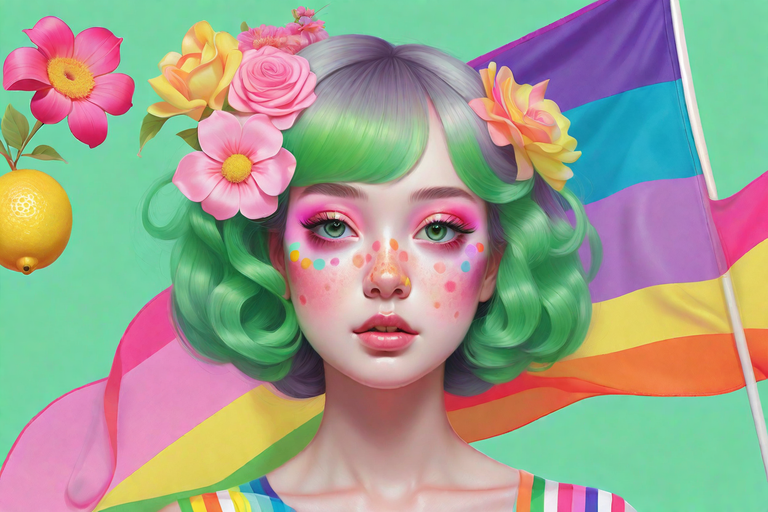
What does each color on the Aromantic Flag represent?
The Aromantic Flag consists of five colors, each with its own meaning. Green symbolizes the Aro spectrum, light green represents romantic orientations outside societal norms, white emphasizes non-romantic connections, gray acknowledges demiromantic individuals, and black recognizes the diversity within the Aromantic community.
Who designed the Aromantic Flag, and when was it created?
The Aromantic Flag was designed by Tumblr user Cameron who introduced it in 2014. The design aimed to create a visual representation for the Aromantic community, fostering visibility and recognition.
How is the Aromantic Flag used within the LGBTQ+ community?
The Aromantic Flag serves as a powerful symbol within the LGBTQ+ community, representing the diverse experiences of Aromantic individuals. It is proudly displayed during Aromantic Pride Month and LGBTQ+ events, contributing to visibility, awareness, and fostering a sense of community.
Are there other related flags and symbols within the LGBTQ+ community?
Yes, there are various flags and symbols within the LGBTQ+ community, each representing different identities. Examples include the LGBTQ+ Pride Flag, Bisexual Flag, Transgender Flag, and many more, each contributing to the rich tapestry of diversity within the community.

Can I create my own DIY version of the Aromantic Flag?
Absolutely! Creating your own DIY version of the Aromantic Flag is encouraged. It allows for personal expression and customization. Be sure to incorporate the five designated colors and their meanings while infusing your unique touch.
What is an example of Aromantic?
An example of someone who identifies as aromantic is an individual who does not experience romantic attraction or feels it to a very limited extent. They may prioritize non-romantic connections, such as strong friendships or familial bonds, over romantic relationships.
How has the Aromantic Flag contributed to community acceptance and adoption?
The Aromantic Flag has played a crucial role in fostering community acceptance by providing a visual symbol for Aromantic individuals. Its presence in LGBTQ+ events and celebrations has increased visibility, promoting awareness and understanding, ultimately contributing to broader acceptance and adoption.
How can the Aromantic Flag contribute to promoting equality and understanding?
The Aromantic Flag serves as a powerful tool for promoting equality by highlighting the diversity of Aromantic experiences. It encourages conversations about romantic orientations beyond societal norms, fostering a more inclusive understanding of love and relationships within the LGBTQ+ community and society at large.

Are there support networks and resources available for individuals exploring their gender identity?
Yes, there are numerous support networks and resources available for individuals exploring their gender identity. Organizations such as The Trevor Project, GLAAD, and local LGBTQ+ community centers offer information, counseling, and community connections to aid individuals in their journey of self-discovery.
What are the different types of Aromantic people?
The Aromantic spectrum encompasses various identities, including Aromantic (Aro), Demiromantic, Gray-romantic, Aro-Ace (Aromantic Asexual), Aromantic Allosexual, Quoiromantic, WTFromantic, Cupioromantic, Akoiromantic, and Lithromantic. Each term represents a unique way individuals relate to or navigate their experience of romantic attraction.
What is the Aromantic Flag?
The Aromantic Flag is a symbolic representation of the Aromantic community, designed with five distinct colors. Green signifies the Aro spectrum, light green represents romantic orientations outside societal norms, white emphasizes non-romantic connections, gray acknowledges demiromantic individuals, and black recognizes the diversity within the Aromantic community. It serves as a visible and meaningful expression of Aromantic identity within the LGBTQ+ community.

What does the Aromantic Flag mean?
The Aromantic Flag is a symbolic representation of the Aromantic community. Each color holds meaning: green for the Aro spectrum, light green for orientations outside societal norms, white for non-romantic connections, gray for demiromantic individuals, and black for diversity within the Aromantic community. Together, these colors create a visual language for expressing and celebrating Aromantic identities.
What is the role of intersectionality in the LGBT and aromantic communities?
Intersectionality acknowledges the interconnectedness of various identities, such as race, gender, and sexuality. In the LGBT and aromantic communities, intersectionality recognizes that individuals may navigate multiple aspects of identity simultaneously, shaping unique experiences. It fosters inclusivity by addressing the diverse challenges and perspectives within these communities.
Are there specific pronouns I should use when referring to a Aaromantic person?
Pronoun usage is personal and varies. Aromantic individuals, like anyone else, may use he, she, they, or other pronouns based on their gender identity. Respecting and using the pronouns an individual provides is a fundamental aspect of affirming their identity and fostering inclusivity.
How does one come out as aromantic?
Coming out as aromantic is a personal journey. Individuals might choose different ways and times to share this aspect of their identity. Some may have open conversations with friends and family, while others may use social media or participate in events like Aromantic Pride Month to express their identity. It’s important to approach coming out in a way that feels comfortable and authentic for each person.

How can I be a supportive ally to someone who is LGBT or aromantic?
Being a supportive ally involves listening, educating yourself on LGBTQ+ and aromantic experiences, respecting individual identities and pronouns, and advocating for inclusivity. Offering a safe and affirming space for open conversations and understanding the unique challenges faced by the community can contribute to allyship.
Is being transgender the same as being aromantic?
No, being transgender and aromantic are distinct aspects of identity. Being transgender relates to gender identity, while aromanticism pertains to romantic orientation. Transgender individuals identify with a gender different from the one assigned at birth, whereas aromantic individuals experience limited or no romantic attraction.
What is the difference between aromantic and non binary?
Aromantic and non-binary refer to different aspects of identity. Aromanticism relates to romantic orientation, while non-binary pertains to gender identity. Aromantic individuals experience limited or no romantic attraction, while non-binary individuals identify outside the traditional binary of male or female.
How to tell if i am aromantic or Nonbinary?
Discovering one’s identity is a personal journey. Reflecting on your feelings towards romantic attraction can help determine if you are aromantic, while exploring your gender identity and how you relate to the traditional male/female binary can guide you in understanding if you identify as non-binary.
What is the difference between aromantic and genderfluid?
Aromantic and genderfluid are distinct aspects of identity. Aromanticism relates to romantic orientation, while genderfluidity pertains to gender identity. Aromantic individuals experience limited or no romantic attraction, while genderfluid individuals may experience a fluid or changing gender identity.
Is polysexual and aromantic the same?
No, polysexuality and aromanticism are different aspects of identity. Polysexuality refers to a sexual orientation where individuals are attracted to multiple, but not all, genders. Aromanticism, on the other hand, relates to romantic orientation, where individuals experience limited or no romantic attraction.




Leave a comment